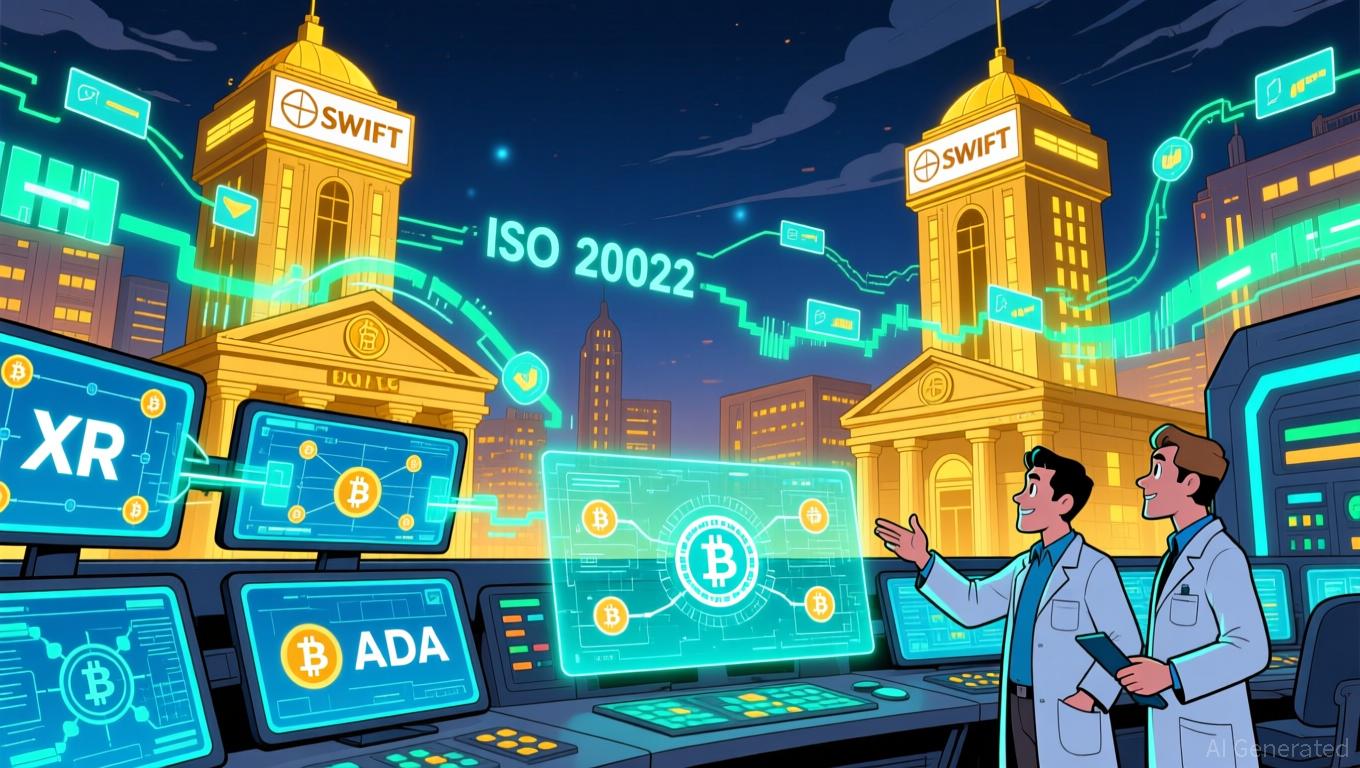Hyperliquid (HYPE) Price Fluctuations: Changing Market Sentiment During DeFi Liquidity Developments
- Hyperliquid (HYPE) faced 2025 liquidity crises from market manipulation and API outages. - November POPCAT spoofing caused $4.5M+ bad debt via leveraged position attacks. - July API outage exposed centralized infrastructure risks during $14.7B open interest. - TVL surged to $2.15B despite whale-driven volatility and anchoring bias effects. - Investors must balance DeFi innovation with systemic risks in fragile liquidity pools.
The decentralized finance (DeFi) industry has consistently faced the challenge of balancing rapid innovation with inherent instability. Hyperliquid (HYPE), a prominent decentralized perpetuals platform, has emerged as a key example for examining how abrupt liquidity disruptions and market manipulation can intensify price swings. Throughout 2025, HYPE's token experienced significant volatility, fueled by a series of notable incidents that revealed weaknesses in both the protocol's structure and market sentiment. This article explores the relationship between liquidity shocks, trader actions, and shifts in sentiment, providing guidance for investors navigating these unpredictable conditions.
The November 2025 POPCAT Incident: Spoofing and Leverage in Action
In November 2025, Hyperliquid encountered its third significant liquidity event of the year when a coordinated attack targeted the Solana-based
This event highlighted a major vulnerability in markets with high leverage and limited liquidity: bad actors can exploit thin order books and community-backed liquidation pools. Unlike typical hacks, this manipulation relied on precise timing and spoofing tactics, illustrating the tension between DeFi's decentralized ideals and its dependence on fragile systems.
The July 2025 API Failure: Infrastructure Weakness and Market Trust
Just a month prior, Hyperliquid faced a different setback. On July 29, 2025,
Although Hyperliquid's technical team quickly restored operations, the incident reignited concerns about the dangers of relying on centralized front-end infrastructure in DeFi.

Market Psychology: TVL, Whale Activity, and Cognitive Biases
Despite these setbacks, Hyperliquid's DeFi Total Value Locked (TVL) climbed to $2.15 billion by late 2025,
Psychological dynamics further intensify market swings. For example, anchoring bias causes whales to concentrate trades at certain price points, while the pursuit of high-risk rewards under leverage leads to bold trading during turbulent times. Analysts need to interpret these patterns carefully, as they can distort underlying market signals and mislead retail traders.
Takeaways for Investors: Managing Risk and Building Resilience
The recent volatility on Hyperliquid provides important insights for DeFi participants. First, liquidity disruptions—whether from manipulation or technical failures—can quickly undermine trust, even in platforms with substantial TVL. Second, volatility driven by large traders highlights the need to track on-chain movements and leverage levels. Lastly, how the platform addresses crises, such as
For HYPE, future success depends on tackling systemic vulnerabilities. Strengthening API reliability, improving detection of spoofing, and expanding liquidity pools could help prevent similar incidents. Still, investors should remain cautious about the DeFi sector's ongoing exposure to manipulation, especially in markets where retail enthusiasm exceeds institutional safeguards.
Disclaimer: The content of this article solely reflects the author's opinion and does not represent the platform in any capacity. This article is not intended to serve as a reference for making investment decisions.
You may also like
XRP News Update: ADA and XRP Highlighted as ISO 20022 Connectors Amid Ongoing Debate Over Compliance Assertions
- XRP and ADA gain attention as ISO 20022 migration nears, with Cardano's founder positioning ADA as a bridge between traditional and decentralized finance. - Critics clarify no cryptocurrency is inherently ISO 20022 compliant, emphasizing the standard governs financial messaging systems, not digital assets themselves. - Ripple's enterprise solutions enable ISO 20022 message compatibility via RippleNet, while XRP's price near $2.42 sparks optimism amid Ethereum ETF outflows. - Cardano's institutional adopt

HBAR's bears encounter a comeback as buyers set their sights on the neckline
- HBAR's 11% drop breached a key neckline, triggering bear trap concerns as 73% of leveraged positions are now short-biased. - A bullish RSI divergence and $5.37M inflow into the Canary HBAR ETF suggest potential short-covering above $0.160. - Bitget's $16.7M short dominance creates asymmetric risk, with a rebound above $0.160 likely to trigger forced liquidations. - However, a breakdown below $0.160 could validate the bearish pattern, targeting $0.113 with strong on-balance volume support.

XRP News Update: XRP ETFs Experience Growth While Solana Faces Challenges, Regulatory Certainty Still Unclear
- XRP ETFs outperform Solana as Canary’s $58M product leads 2025 crypto ETF debuts amid regulatory uncertainty. - XRP’s institutional appeal contrasts with Solana’s niche traction, while SEC inaction delays broader adoption. - XRP’s $2.24 price struggles reflect bearish momentum, but "buy the dip" optimism persists ahead of potential rebounds. - Canary pauses new XRP ETFs pending SEC clarity, highlighting regulatory risks as crypto markets face $1.4B in ETF outflows.

Vitalik Buterin’s Latest Support for ZK Technology and What It Means for the Cryptocurrency Industry
- Vitalik Buterin promotes ZK technologies as Ethereum's scalability and privacy solution, accelerating institutional adoption through technical upgrades and partnerships. - ZKsync's 15,000 TPS Atlas upgrade and Polygon's AggLayer framework highlight ZK's role in cross-chain efficiency, with ZKsync's token surging 120% in 2025. - Institutional investments in Succinct Labs ($55M) and Aztec Network ($100M) underscore growing confidence in ZK's ability to solve blockchain's scalability-privacy trilemma. - ZK
